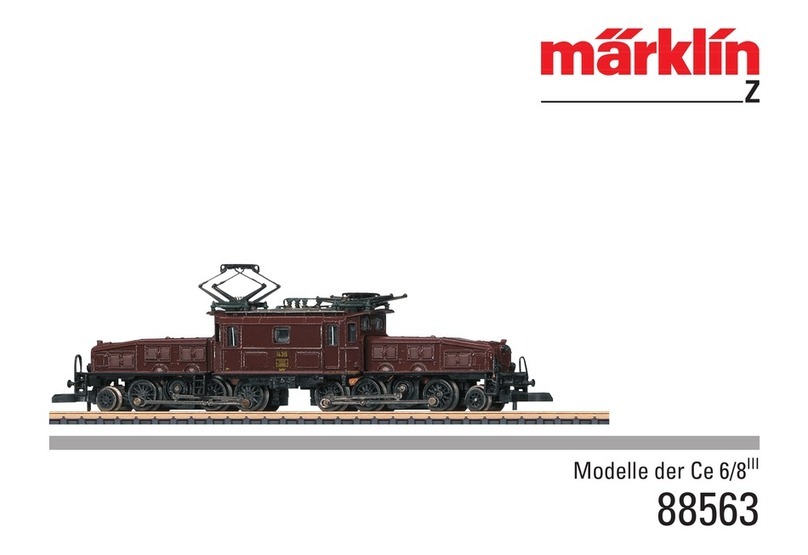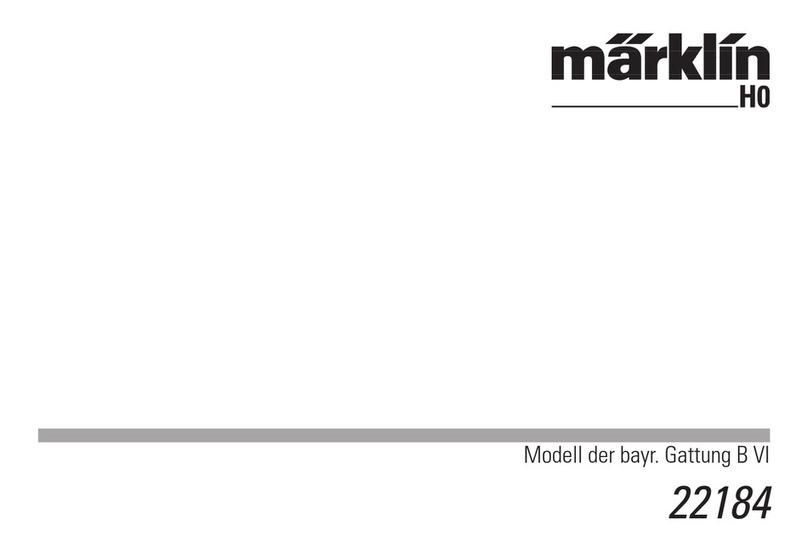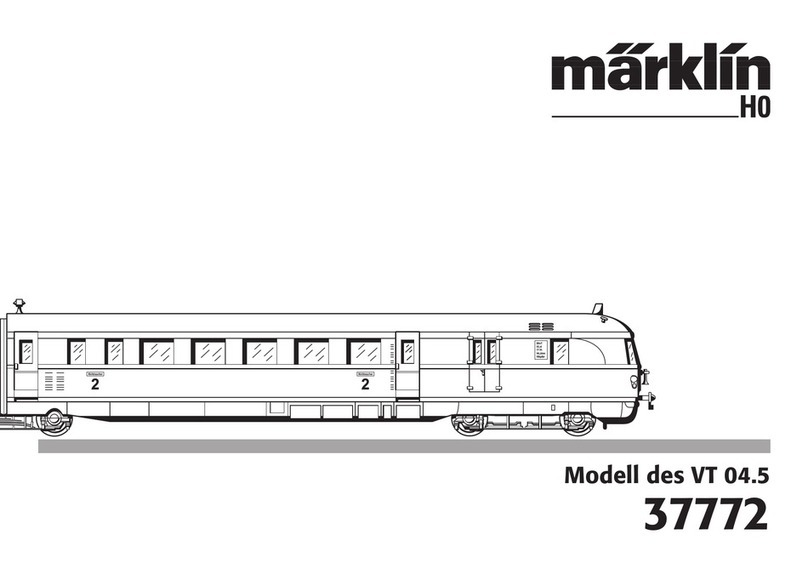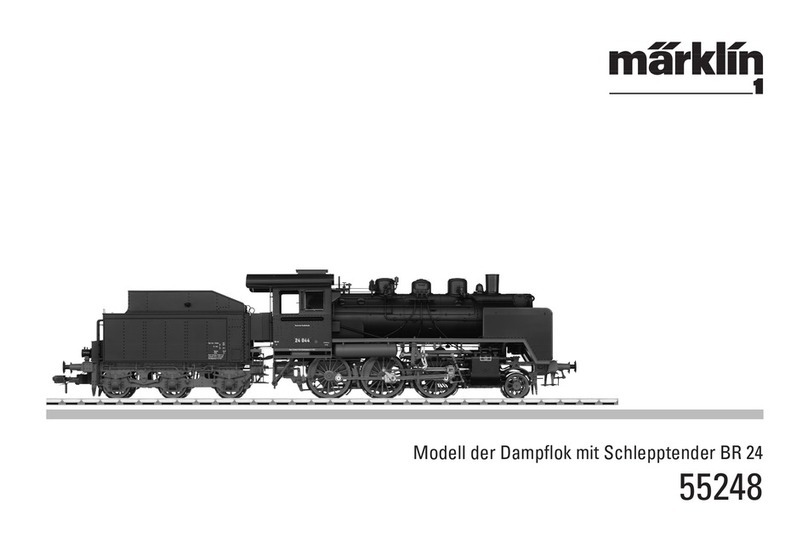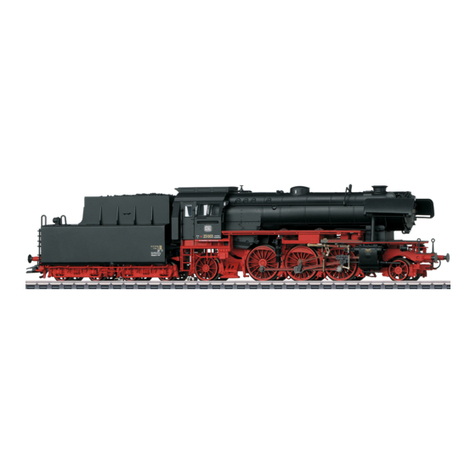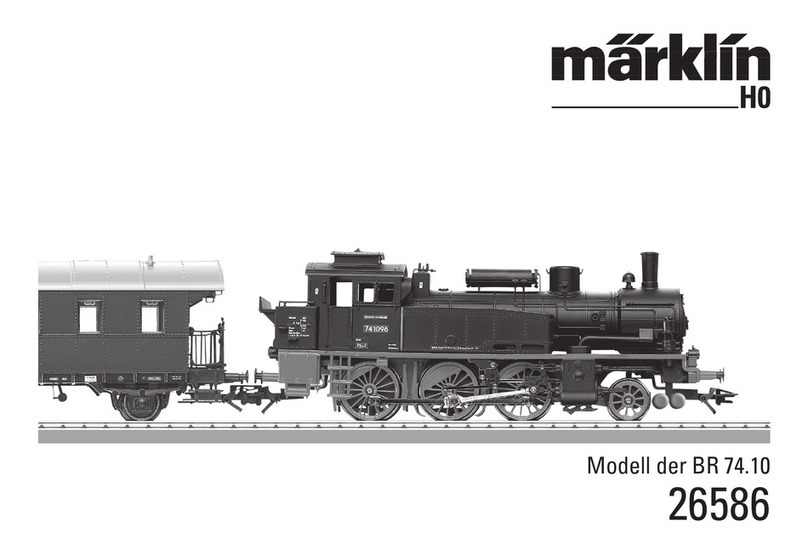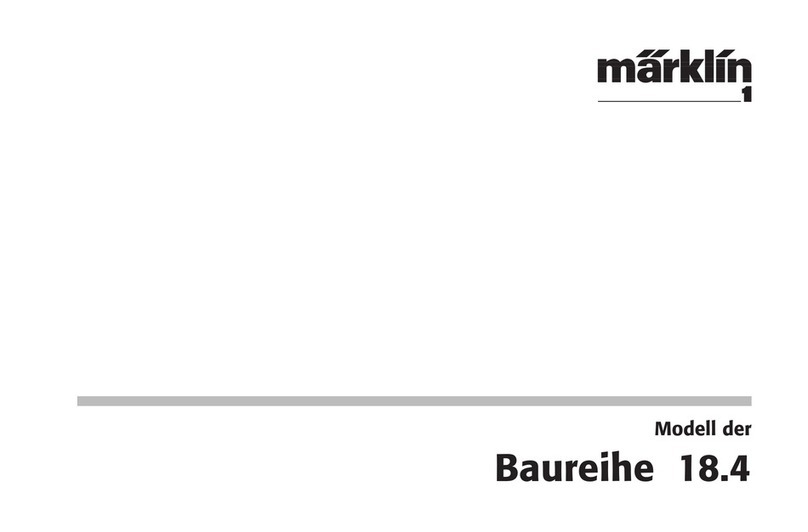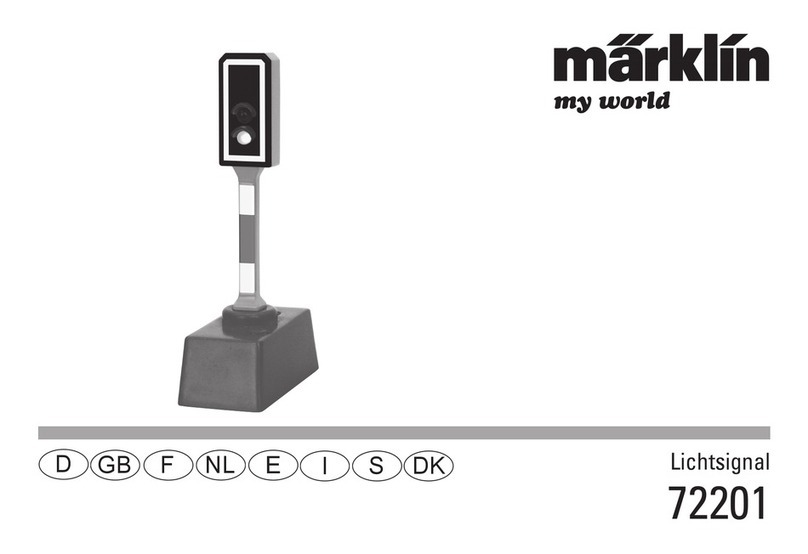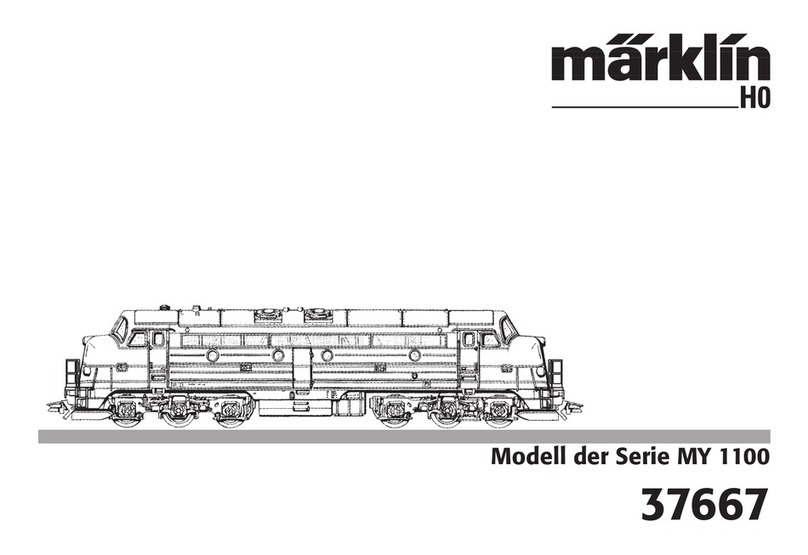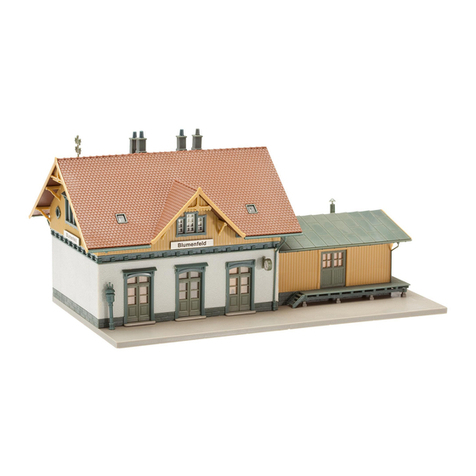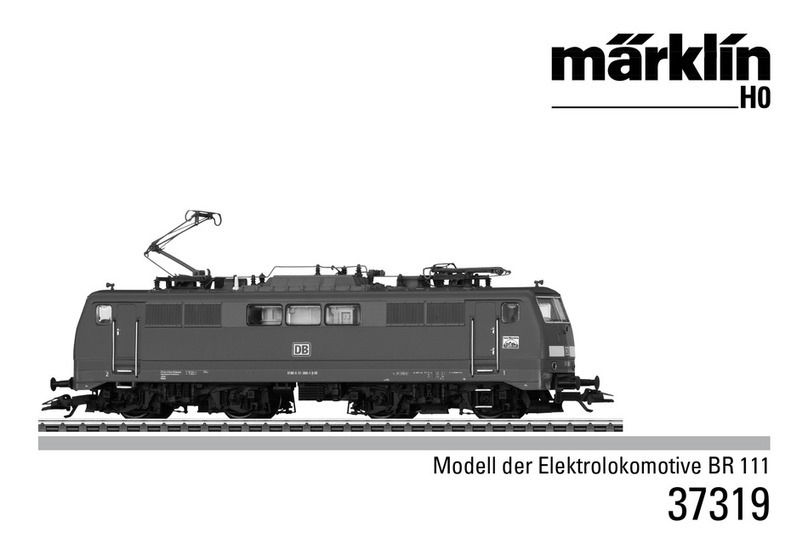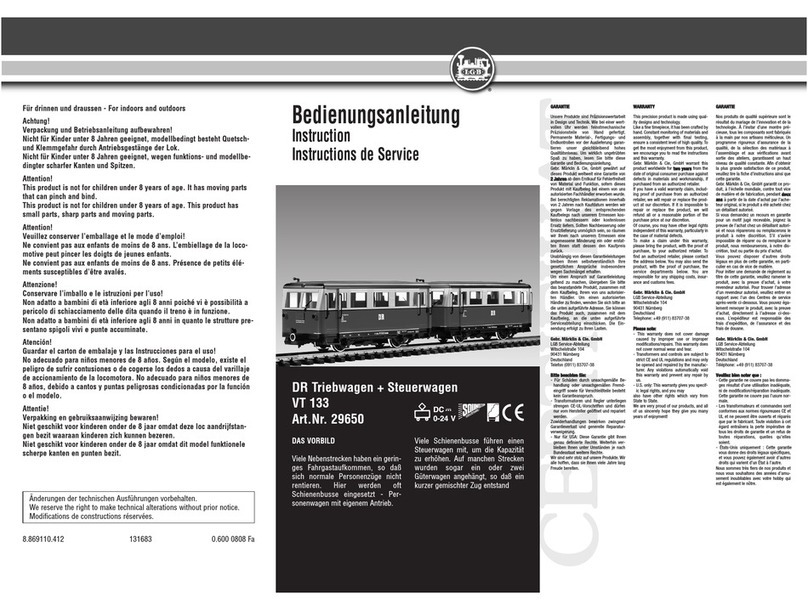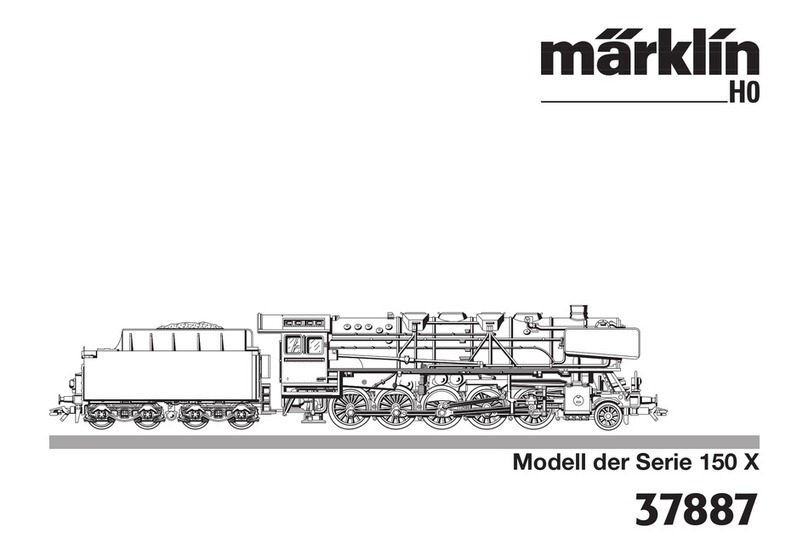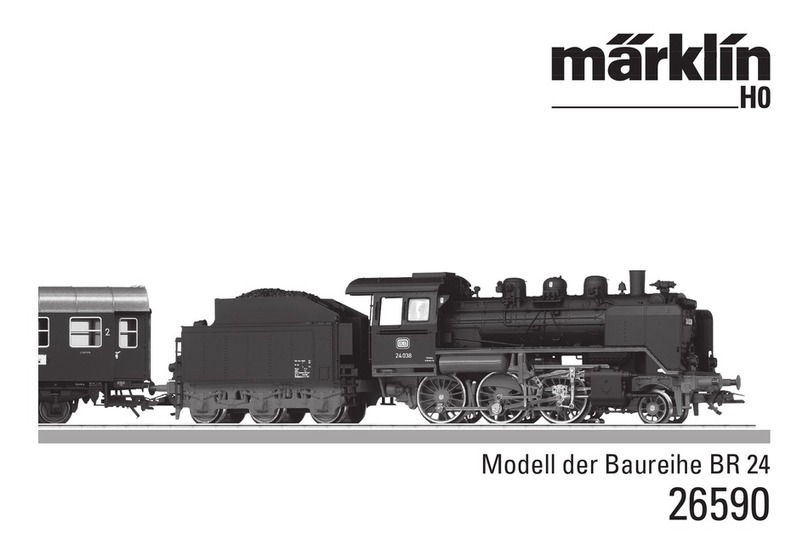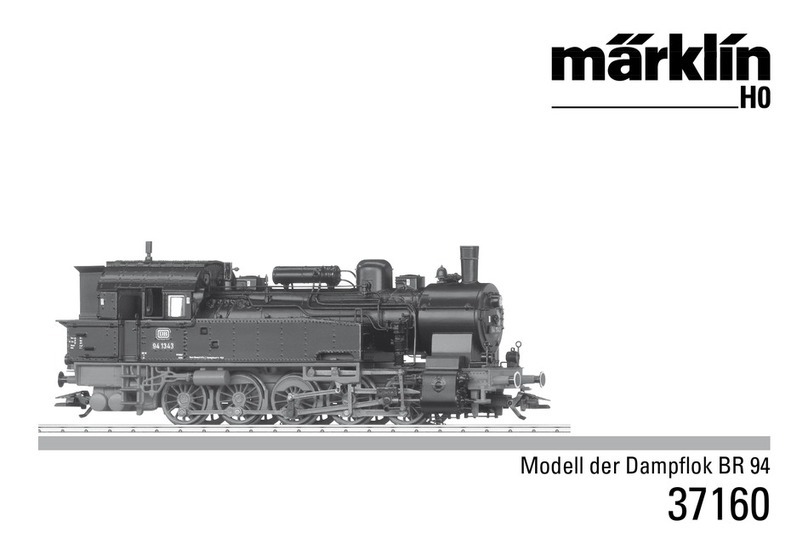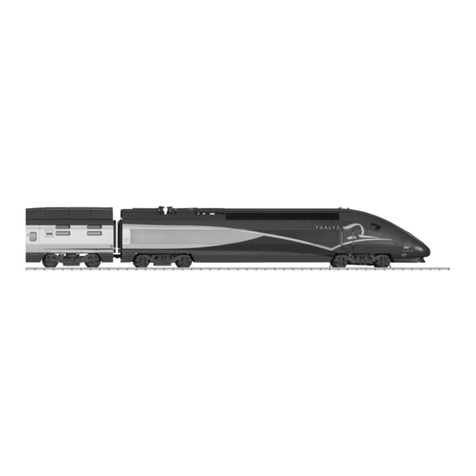Vorbild • Prototype • Exploitation dans le réel • Grootbedrijf 4
Informations concernant la locomotive réelle:
Dans la réalité, la locomotive faisait partie des locomotives unifiées que la DRG
avait décidé de développer au cours des années vingt. Le but était de disposer
d’une nouvelle famille de locomotives comportant un maximum d’éléments standar-
disés, d’un prix de revient plus avantageux et d’un entretien plus économique. Un
des problèmes majeurs que la DRG devait résoudre était son parc fort hétéroc-
lite de véhicules moteurs qui se composait d’un grand nombre de machines de
provenances diverses. Là-dessus s’ajoutait le fait que les engins d’une même série
pouvaient eux-mêmes se différencier très fortement. Un bon exemple de cela est la
locomotive-tender de la légendaire série T3; en effet, celle-ci rassemblait en réalité
des locomotives d’origines différentes. Le maintien en état rationnel d’un tel parc de
machines exigeait beaucoup de prestations et coûtait par conséquent très cher.
La livraison des premiers exemplaires de la série 01 a commencé en 1926. Les
élégantes locomotives de cette série devaient s’affirmer vis-à-vis de celles de la
série 02, construites à la même époque; ces deux séries se différenciaient essenti-
ellement au niveau du moteur: celui de la 02 possédait 4 cylindres tandis que celui
de la 01 n’en avait que deux. C’est cette dernière série qui sortit victorieuse de cette
rivalité, à cause de sa puissance suffisante et de son mécanisme techniquement
plus simple et plus facile d’entretien. Les machines de la série 02 furent plus tard
également équipées du moteur de la série 01 et renumérotées dans celle-ci. Les
locomotives de la série 01 ont très vite gagné les faveurs des cheminots de la DRG.
Cette série, construite en plusieurs lots successifs jusqu’en 1938, a compté au total
plus de 240 locomotives (y compris les machines transformées issues de la série
02). Les derniers exemplaires de ces dinosaures de la vapeur ont servi sur les rails
de la Deutsche Bundesbahn jusque dans les années 70 tandis qu’à la Deutsche
Reichsbahn, elles ont roulé une décennie de plus. Fort heureusement, quelques
modèles ont échappé au chalumeau du ferrailleur. Certaines sont préservées en
musée tandis que d’autres, en parfait état de marche, remorquent régulièrement
des trains spéciaux.
Les locomotives jusqu’au numéro d’immatriculation 01 101 se distinguaient par
leurs roues de bissel avant d’un diamètre de 850 mm. Conçues pour rouler à une
vitesse de 120 km/h, ces machines disposaient de roues motrices d’un diamètre de
2000 mm. La puissance de la machine s’élevait à 2240 CV (unité de mesure de cette
époque) qui équivalent à environ 1650 kW.
Informatie over het voorbeeld
Het voorbeeld van dit locomotiefmodel behoort tot de familie van de
eenheidslocomotieven. Achter deze projecten uit de twintiger jaren stond
de opdracht van de DRG om een locomotieffamilie te ontwikkelen met
zoveel mogelijk dezelfde onderdelen. Dit zou de kosten van fabricage en
onderhoud sterk kunnen beperken. Dit was namelijk een belangrijk punt
van de problemen bij de DRG, want het locomotievenpark bestond uit een
samenraapsel van diverse makelij en herkomst. Hierbij kwam nog als extra
bezwarende omstandigheid dat, zelfs modellen van dezelfde bouwserie
onderling sterk verschilden. Een goed voorbeeld hiervan is de legendarische
tenderlocomotief van de serie T3. Onder deze serie waren in werkelijkheid
locs van verschillende afkomst samengevat. Een rationeel onderhoud van het
locomotievenpark was hierdoor zeer arbeidsintensief en kostbaar.
Uitgeleverd werd de serie 01 vanaf 1926. Deze elegante nieuwe construc-
tie moest zich staande weten te houden naast de gelijktijdig ontwikkelde
serie 02, die zich hoofdzakelijk door een viercilinderaandrijving van de
tweelingaandrijving van de 01 onderscheidde. Winnaar bleef de uitstekend
presterende maar ook onderhoudstechnisch eenvoudiger serie 01. De mo-
dellen van de serie 02 werden later eveneens omgebouwd met de aandrijving
van de bouwserie 01 en ondergebracht in de nummerreeks van de serie 01.
De serie 01 ontwikkelde zich al snel als één van de meest geliefde locomotie-
ven van de DRG. In meerdere bouwfasen, die telkens verder doorontwikkeld
werden, ontstonden tot 1938 240 exemplaren (inclusief de omgebouwde
versie van de 02) van deze locomotiefconstructies. De laatste exemplaren
van deze stoomdinosauriërs werden bij de Deutschen Bundesbahn tot in de
zeventiger jaren gebruikt. Bij de Deutschen Reichsbahn eindigde de dienst
nog tien jaar later. Maar tot op heden zijn gelukkig enkele modellen van deze
serie gered van de snijbrander en zijn in musea te bezichtigen of te bewonde-
ren voor speciale treinen en ritten.
De locomotieven tot bedrijfsnummer 01 101 kenmerkten zich door de 850 mm
grote voorloopwielen. Deze modellen waren ontwikkeld voor een maximums-
nelheid van 120 k/h. De drijf- en koppelwielen hebben een doorsnede van
2000mm. Het vermogen van de machine bedroeg in de destijds gebruikelijke
eenheid 2240 pk (komt overeen met ca. 1650 kW).



